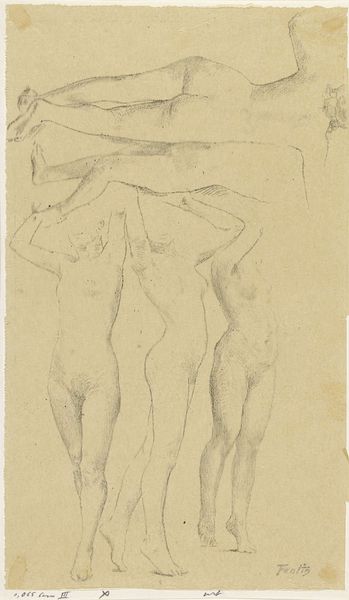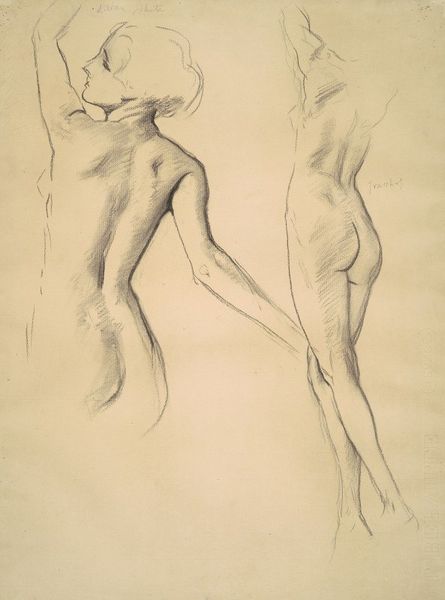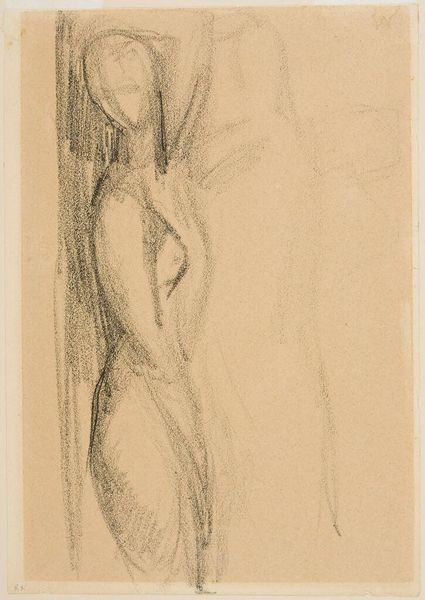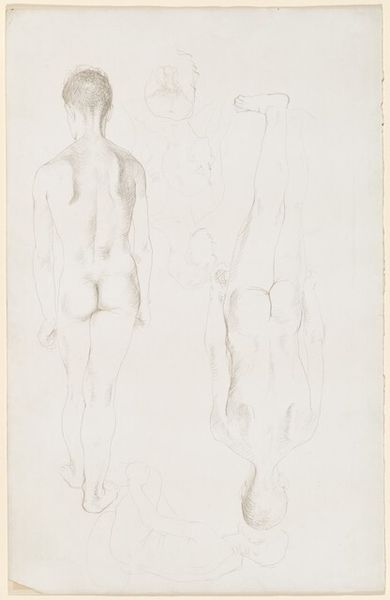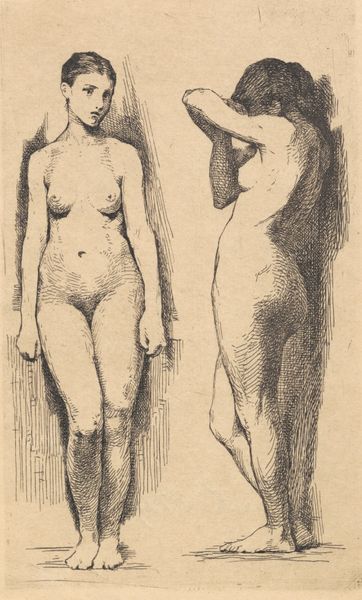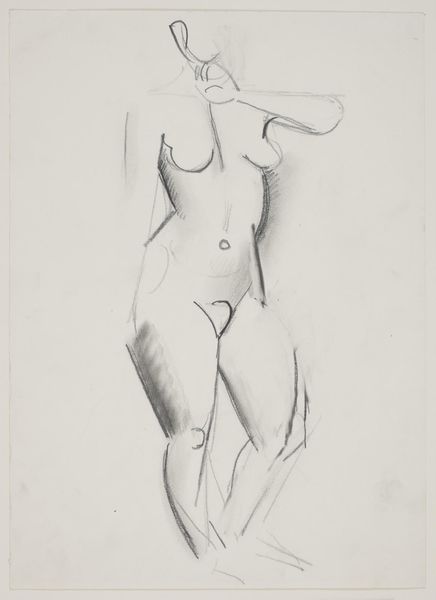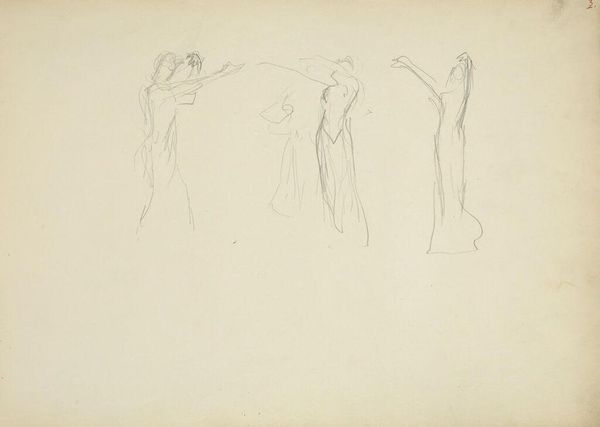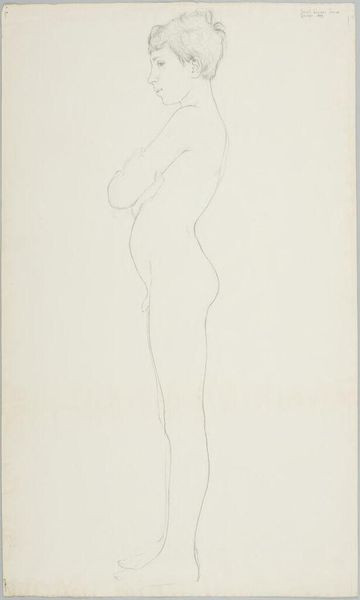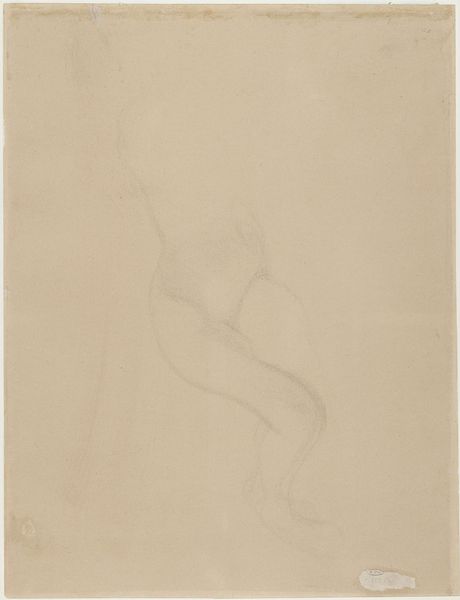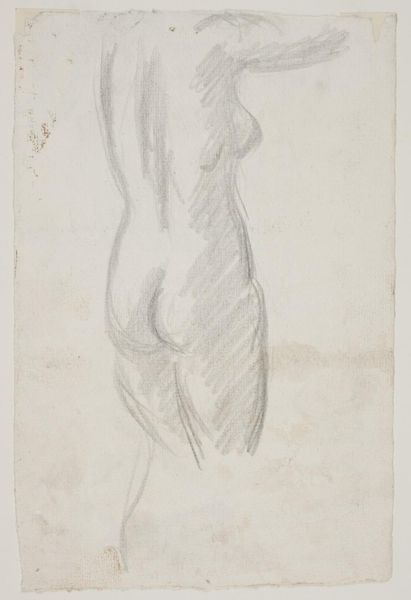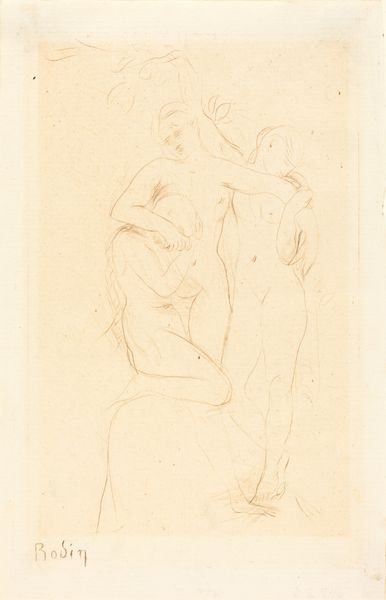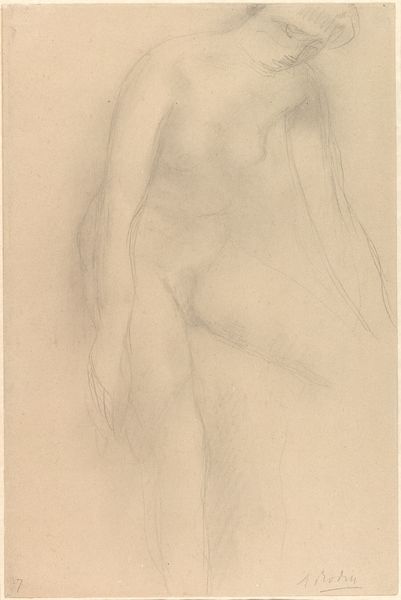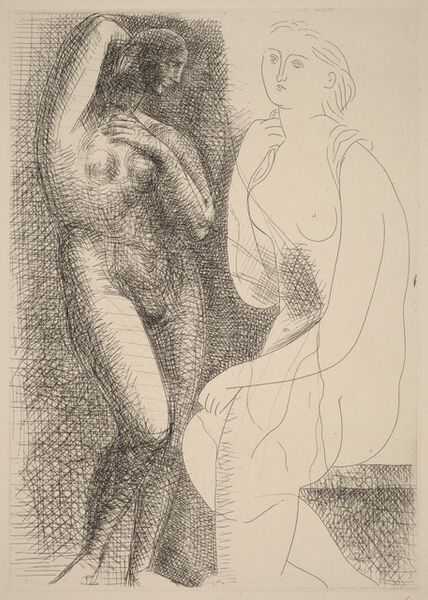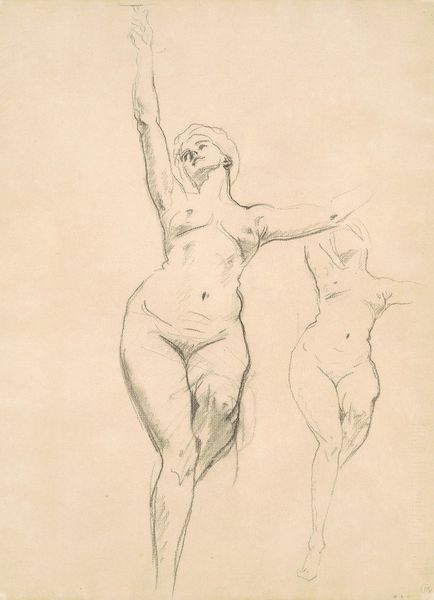
Copyright: Public Domain: Artvee
Editor: Okay, so we're looking at "Two Nudes, Arms Raised," a pencil drawing by Edgar Degas, likely from between 1898 and 1900. It feels very immediate, almost like a study. The figures seem caught in motion. What do you see here? Curator: Beyond the apparent sketch-like quality, I see Degas grappling with the representation of women and the feminine ideal as potent symbols, simultaneously active and observed. He has posed his models in a moment of what appears to be pure gesture, their arms raised—perhaps reaching, perhaps surrendering. Don't you feel the tension in their posture? Editor: Yes, I can see that. The raised arms do feel ambiguous. What could that gesture symbolize at the time? Curator: Well, in Degas' era, representations of the female nude often oscillated between idealization and objectification. But these women, rendered with such raw immediacy, evoke something deeper. Think about the symbol of the raised arms throughout history, signifying supplication, or perhaps exertion and freedom. Are they dancers stretching, or figures caught in an act of defiance? Perhaps Degas sought to capture the psyche of the modern woman through her body. Editor: I see what you mean. It’s not just about the physical form, but what the body *means.* So the lack of detail…it invites us to project our own ideas onto the figures. Curator: Precisely! Degas leaves them open to interpretation, tapping into a collective cultural memory of feminine representation. What do *you* bring to the image? Editor: That's interesting. I hadn't thought of it that way before. I initially saw vulnerability, but I also see strength now. It's a very dynamic piece when you consider its layers. Thanks! Curator: Indeed! Visual symbols are anything but stable; their meaning constantly shifts. That's why they remain so powerful across centuries.
Comments
No comments
Be the first to comment and join the conversation on the ultimate creative platform.
